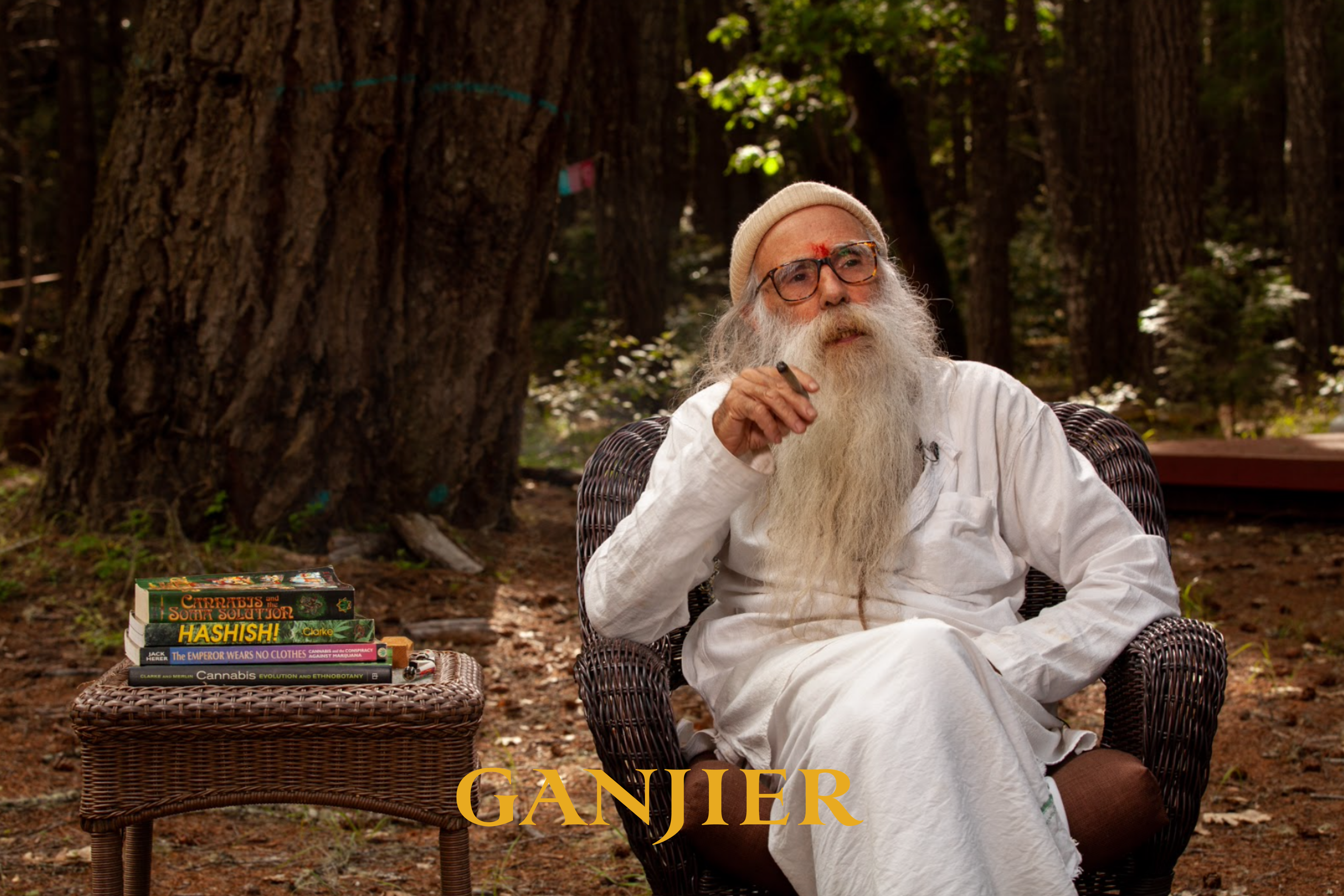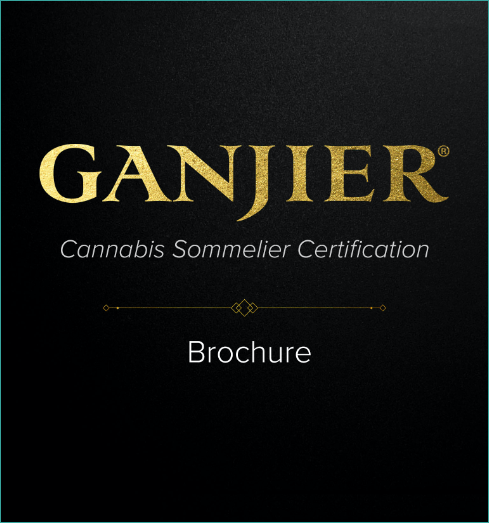In the ever-changing new world of cannabis, new ideas, new techniques, new ways of extracting, smoking, ingesting, cultivating, drying, and packaging the magical herb emerge every day. There is one new topic, however, that is really quite old. This is the creation of appellations for cannabis.
So what are appellations? And how are they relevant to the Ganjier Certification?
According to Wikipedia, in the year 1411 King Charles VI of France granted a monopoly to the farmers of Roquefort-sur-Soulzon for the process of ripening the cheese in their local caves. He so loved that cheese that he wanted to protect the farmers who made it and also to be sure that what he was eating was the real thing.
When France created the regulations for Appellation of Origin Controlee in 1925, Roquefort was granted the very first appellation. There are now hundreds of agricultural products awarded appellations in France and in many other countries as well. These designations are mostly for wine, but also for many other agricultural products, such as lavender, honey, cheese, butter, etc.
To be called Roquefort, the cheese must be made from 100% milk from the La caune breed of sheep and must be made with the special mold (penicillium roque forti) that is only found in the soil of a specific cave in the region. In all there are seven strict rules governing the use of the word Roquefort.
Most people are familiar with Champagne from France, which, by the way, goes quite well with Roquefort cheese. Again according to Wikipedia, for a sparkling wine to be awarded the designation “Champagne,” the grapes must be grown in specific vineyards in that province, using only certain types of grapes, with strictly controlled methods of processing and bottling. There is something special about Champagne and that specialness is the result of where and how certain grape varietals are grown and processed which is the result of centuries old local traditions and practices combined with the unique soil and weather of the region.
In both cases, there is something special in the soil and in the local environment, combined with a special knowledge or way of processing which was developed over the years by the farmers in the area.
An appellation is also known as a Protected Designation of Origin, and is defined by the Lisbon Agreement for Appellations in 1970. Link
“Appellation of Origin” means the geographical denomination of a country, region or locality, which serves to designate a product originating therein, the quality of characteristics of which are due exclusively or essentially to the geographical environment, including natural and human factors.
What is an appellation based on? As we have seen, it starts with the soil. The key concept is terroir, another French word meaning “of the earth”, sometimes rendered as “the taste of a place”. The French National Institute of Origin and Quality defines terroir as follows: Link
A terroir is a specific geographical area where production takes its originality directly from the specific nature of its production area. Ter roir is based on a system of interactions between the physical and biological environment, and a set of human factors within a space which a human community built during its history with a collective productive knowledge. There are elements of originality and typicality of the product.
Appellations of Origin are a smaller, more rigorous sub set of Geographic Indicators, which are a category of Intellectual Property Laws. Many growers and breeders are familiar with intellectual property rights from the aspect of attempting to protect their genetics—or have them stolen—through patenting. Appellations are similar and go hand in hand in protecting a cultivar, which has most likely been developed by an OG farmer in a legacy cannabis growing region.
The larger category, Geographic Indicators, is based primarily on reputation rather than strict rules. Familiar name products such as Virginia tobacco, Egyptian cotton, Idaho potatoes, Jamaican Blue Mountain coffee, Darjeeling tea, Basmati rice, etc, etc. All of these are more valuable crops and command a higher price because of their association with “place”. This designation, however, simply informs the consumer that the actual product, or the place where the product was originally grown, was a particular geographic area, with no further stipulations or requirements.
The final version of the cannabis laws passed in California in 2017 allows a cultivator to put the county of origin on the label if 100% of the product in the package is from that county, but there are no further restrictions. So cannabis flowers grown in a greenhouse or indoors, as well as those grown in the open air can all claim “County of Origin.”
To be granted an “Appellation of Origin” for cannabis, on the other hand, the first most basic requirements are that the plants must be grown in the ground, in open air under the sun, with no artificial light after flowering starts. Without this baseline standard, there is no way to demonstrate that the resultant cannabis flowers are a product of their environment. The baseline assures that the distinctive qualities of the cannabis come from the terroir, that is from the macrobiome, the microbiome, the climate and the topography as well as the interaction of the cultivator and the cultivar with that unique ecology.
Significantly, appellations are created by the cultivators in the designated area themselves. In California’s program, farmers in a legacy cannabis growing area would form a collective or petitioning group and then define the boundaries of the area they wish to have designated. They would also establish a set of standards and practices, as well as prescribe cultivars which are unique to or express the distinctiveness of the region. Or they could prohibit certain cultivars, if they so choose.
Standards could be things like requiring the use of water sourced from wells, ponds and rain catchment on your land, meaning no water trucks delivering town water. They might limit maximum canopy size, or establish minimum cannabinoid content; they might demand growing from seeds rather than clones and also ban feminized or auto-flowering seeds.
Practices could stipulate organic or regenerative methods of cultivation, require nutrient material and amendments come from one’s own farm, or be acquired hyper-locally. They might specify hand trimming but no wet trimming, or drying in a wooden barn at 60º and 60% humidity for a minimum ten days. They might ban the use of monofilament line, or ban perlite and peat moss, or prohibit any artificial light for the whole grow cycle.
Not that it will be an easy task to organize, at minimum, three licensed cultivators from a legacy growing area and get them to agree on the boundaries, standards, practices and cultivars for their appellation. It won’t be cheap either. Studies will have to be made on climate, soil composition, the macro and micro biome, water
quality and probably a geological survey will have to be made and a topographical map created. It could easily come to six figures to hire all the experts required to complete these reports.
Once the studies are complete the group of cultivators would then petition the State, in this case California, to grant them an appellation and the exclusive right to use that name on the label. Even though not all farmers in the area will meet the standards, all the others share in the reputation, even if they are not yet up to the mark.
The key concept is that the Appellation belongs to the geographic area itself and to the collectivity of farmers in that area who form the group and meet the requirements. This is in contrast to a trademark, which is more common in the US. However, a trademark is owned by a private company and it can be bought and sold. Further, since it is not tied to the land, the trade mark can be moved if the business moves or is sold.
Another difference between appellation and trademark is that in the latter case, an infringement must be legally challenged by the owner of the trademark, whereas an appellation is presumably enforced by the state, as in France and the European Union. However, as the current law stands in California, the enforcement mechanisms are not adequately spelled out.
Certified grower members of the petitioning group benefit from the fact that a “Protected Designation of Origin” or “Appellation of Origin Controlee”, creates a prima facie “value added” to the product. The guaranteed uniqueness and quality of the cannabis flower commands a higher price in the market. As consumer knowledge and sensitivity grow over the years, brand names tied to appellations will be more and more important. A package of cannabis flowers from Swami Select on Bell Springs Road in the Mendocino Highlands, the very Heart of the Emerald Triangle, will command the top price.
Appellations also benefit the consumer (just like King Charles) by guaranteeing that what it says on the label is what is actually in the bottle, package or jar. Protected Designation Origin is a form of branding, and branding is all about the consumer’s experience of the product. This is where appellations become relevant for the Ganjier. The Protected Designation of Origin assures the consumer that the expected experience is one they will actually enjoy. It is the guarantor of tradition, of quality and of singularity, so customers won’t object to paying more. This helps the small craft farmer stay in business, because it takes more time and effort to grow in the required way.
Appellations are extremely important for wine, and any Sommelier will be very familiar with the famous appellations such as Bordeaux and Burgundy and be conversant both with the qualities of the wine and the characteristics of the region producing it. Thus, a Ganjier could recommend that a client try another farmer’s flowers of the same cultivar from the same appellation if their favorite wasn’t available. It is also an opportunity to relate a personal anecdote about visiting that region and how the terroir is expressed in the flower in question.
At the moment, California, as required by State law, is at the forefront of this process of creating the regulations for cannabis appellations. The implications, however, are national and global. Washington, Oregon, Michigan and other states can create their own appellations for sungrown cannabis. Protected Designations of Origin for Afghani charas, Moroccan hash, Lebanese Blond, Bombay Black, Malani Cream, Nepali Temple balls, Santa Marta Gold, Acapulco Gold, Michoacan, Panama Red, Thai sticks, Kenyan, Nigerian, Mexican, Jamaican… how many did I forget?
Think of it!! International and national trade in cannabis and hashish with protections for the farmers of those time-honored legacy cultivating regions of the world and for the consumers of these legendary products. And it would be legal, hopefully even fair trade. Aahh, the Future!
[This is a revised and expanded version of an article previously published in Grow Magazine, Volume 5, Issue 3. Used with permission.]


